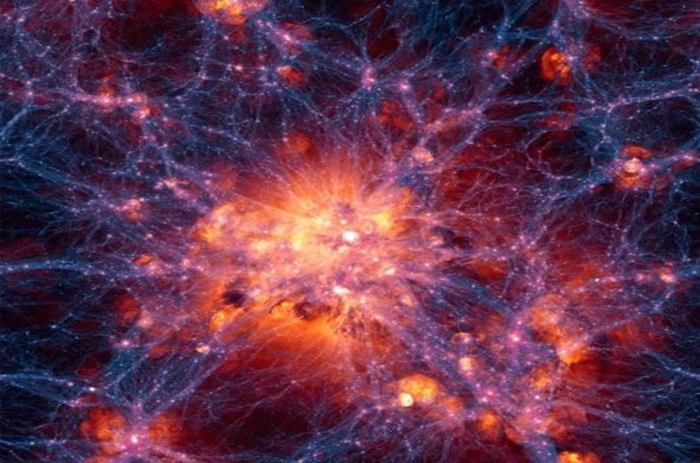Of all the questions discussed by theologians, philosophers, and scientists, perhaps the most enduring and enigmatic is: Where did the universe come from? Lyman Page, professor of physics at Princeton University and co-winner of the 2018 Breakthrough Prize in Fundamental Physics, is a part of a team that has brought humanity one step closer to finding an answer to this question.
On Feb. 21, AstroMcGill invited Page to give a public talk on his groundbreaking research in observational cosmology and to explain the most recent theories in this field.

Page’s presentation focused on this oval-shaped, infrared-looking photo which represents a simulated cosmic microwave background (CMB), created using data from the Wilkinson Microwave Anisotropy Probe (WMAP), a spacecraft that measured the conditions of the early universe. Simply put, it is a heat map of the beginning of the cosmos.
The most well-supported birth-story of the universe is the inflation model. This theory suggests that from a very high-temperature, high-density state, some process amplified quantum fluctuations to an enormous scale at an insanely fast rate. During this original inflation, the universe was so hot and full of energy that electrons couldn’t attach to protons to form hydrogen or other basic elements. As the universe expanded, it cooled, allowing atoms to form. In his lecture, Page explained some of the after-effects of this process.
“When the electrons are bound up with the protons [in the formation of atoms], they don’t scatter [electromagnetic] radiation, and so the universe becomes transparent,” Page said. “The radiation decouples from the matter, the matter then goes on to form […] all the structure of the universe, us, stars, galaxies.”
The radiation emitted from this stage makes up the CMB, and measuring it is the closest we can get to observing the Big Bang. The expansion of the universe has stretched the wavelengths of this radiation, transforming it from bright light into microwaves. Page and his colleagues essentially captured tiny fluctuations in the temperature of these microwaves from all directions to create a full-sky map of the oldest light in the universe. For frequent TV-watchers of the late 1990s, Page explained how most of us have already detected CMB.
“Roughly one per cent of that fuzz on your TV [so-called white noise on old satellite TVs] is from radiation leftover from the Big Bang,” Page said. “[And] what we do is […] build various versions of very fancy TV receivers and point them around the sky and measure the change in the amount of buzz we detect.”
Page and his fellow physicists have used this picture of the birth of the universe to deduce, with great accuracy, things such as the age of the universe (13.77 billion years) and the quantities of its constitutive parts (4.6 per cent atoms, 24.0 per cent dark matter, and 71.4 per cent dark energy). Yet, many mysteries remain unsolved. What are dark matter and dark energy? Truthfully, we don’t know yet. That means the fundamental properties of 95.4 per cent of the observable universe are unknown to us. But, thanks to Page and his colleagues, we now very accurately know what we don’t know; a Socratic step in the right direction.
For readers with an interest in the topic, click here for a recording of the lecture.








